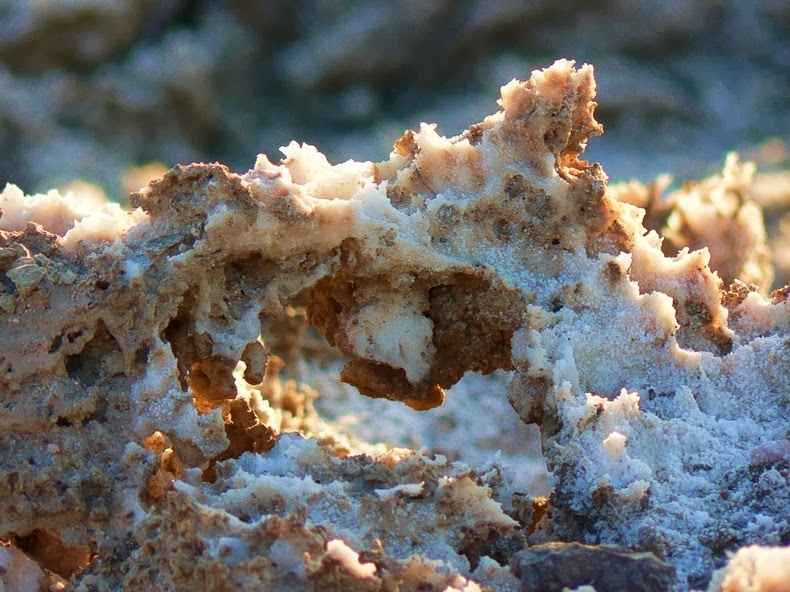
About 150,000 years ago the present day salt pan was the site of a large, deep lake caused by snow and melting glaciers as far away as the Sierra Nevada. Known as Lake Manly, this body of water reached depths of 600 feet. During this period the majority of the salts that comprise these formation entered the area. At the close of the last Ice Age (about 10,000 years ago) climate change initiated a period of evaporation drying up this lake. Then for a brief period during the Holocene (2,000 to 4,000 years ago) the climate was again much wetter and another shallow lake formed primarily from snow melt in the surrounding mountains and the drainage of the Amargosa River. This time the salt pan flooded to a depth of about 30 feet.
The climate warmed again, rainfall declined, and the shallow lakes began to dry up. As water evaporated, minerals dissolved in the lake became increasingly concentrated eventually leaving a thick salty pool on the lowest parts of Death Valley's floor.
While the saltpan at Badwater periodically floods, then dries, Devil's Golf Course lies in a part of the Death Valley salt pan that is several feet above flood level. Without the smoothing effects of flood waters, the silty salt at Devil's Golf Course grows into fantastic, intricately detailed pinnacles. The pinnacles form when salty water rises up from underlying muds. Capillary action draws the water upward where it quickly evaporates, leaving a salty residue behind. The pinnacles grow very slowly, perhaps as little as an inch in 35 years. Wind and rain continually sculpt the salty spires into fascinating shapes.










Source
